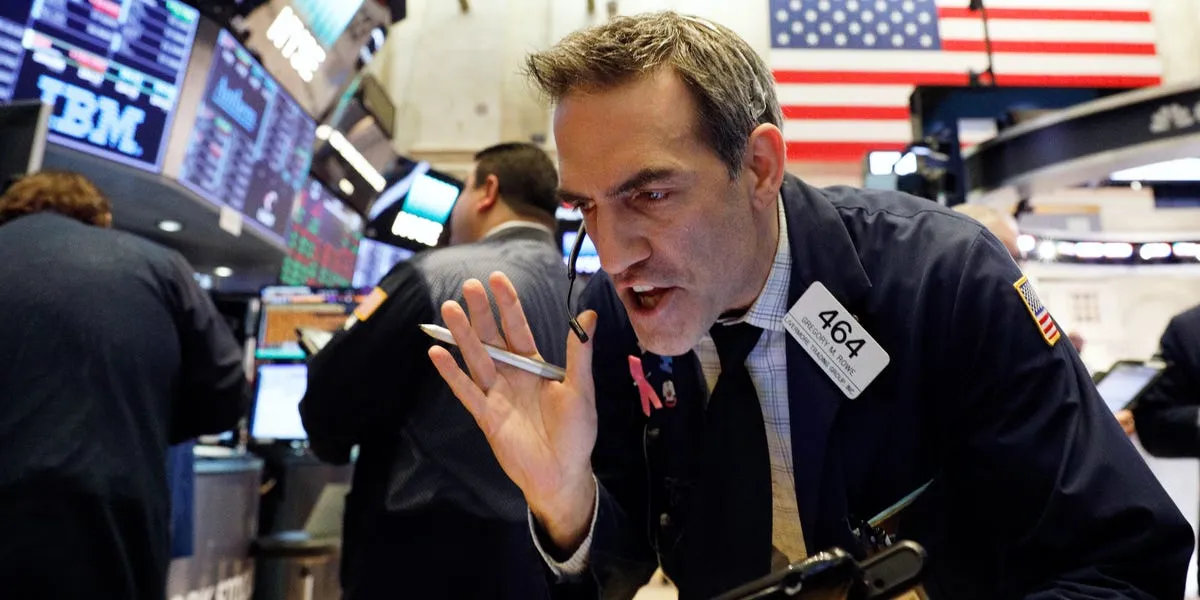The US Stock Market Gained Ground on Optimism Over AI Momentum, as Well as a Fed Easing
US stocks pushed higher on Friday, with optimism around artificial intelligence and growing expectations for interest-rate cuts fueling risk-on sentiment across the market.
The S&P 500 climbed 0.2% shortly after the open in New York, with nine of its 11 sectors trading in the green. The Nasdaq 100 also advanced 0.2%, while the Cboe Volatility Index (VIX) held near 16.4, signaling a relatively calm backdrop.
The benchmark S&P 500 is now on track to notch a sixth consecutive daily gain its longest winning streak since July. For now, traders appear more focused on growth opportunities than the political uncertainty surrounding the ongoing U.S. government shutdown. That standoff has already delayed key economic updates, including the closely watched nonfarm payrolls report originally scheduled for release on Friday.
Looking beyond the political gridlock, strategists at Bank of America Corp. recommend that investors balance high-growth AI stocks with more value-oriented names tied to the broader economy, such as commodity-linked equities. At the same time, they cautioned that signs of “froth” are starting to emerge in several areas, from stretched valuations and concentrated market leadership to speculative trading behavior.
So far, risk-on appetite hasn’t shown much sign of cooling. Global equity exchange-traded funds (ETFs) attracted $152 billion of inflows over the last three weeks, according to Bank of America, citing data from EPFR Global. That marks the largest three-week inflow on record.
Meanwhile, bearish sentiment is rapidly fading. Analysts at Bloomberg Intelligence noted that bullish call-option trading has surged to all-time highs, while shorting stocks has become increasingly perilous especially in an era where retail traders can trigger powerful meme-stock rallies seemingly overnight.
Among individual stocks, Applied Materials slid as much as 3.4% after the semiconductor equipment maker warned that fiscal 2026 revenue would take a $600 million hit. The decline stems from a new rule issued by the U.S. Department of Commerce’s Bureau of Industry and Security, which is expected to weigh on the company’s international sales.
In contrast, Johnson & Johnson gained 0.9% after Wells Fargo Securities raised its rating to overweight from equal-weight. Analysts said the health-care giant has meaningful upside potential, particularly from its pharmaceutical division.
The latest U.S. jobs report became another casualty of the government shutdown, leaving markets without one of the most closely followed economic data points. Still, ING strategists suggested that the absence of the report may actually be keeping volatility contained for now.
Some analysts also argue that the labor market may not be as weak as a recent private-sector reading suggested. Earlier this week, a report from ADP Research Institute pointed to slower hiring momentum, but many investors see it as overstating potential weakness in employment.
While artificial intelligence continues to capture investor attention, another market story has been unfolding more quietly: the surge in gold demand. Central banks have been ramping up their purchases of the precious metal, reinforcing its role as a global reserve asset.
At the same time, a basket of gold-mining stocks has outperformed semiconductor names in 2025, highlighting how investors are seeking balance between the AI-driven growth story and traditional safe-haven plays.
In short, Wall Street is riding a wave of enthusiasm tied to AI and easier monetary policy, even as political uncertainty lingers in Washington. Investors are pouring record amounts into equities, corporate headlines are driving selective moves, and gold’s quiet rally reminds markets that diversification still matters.

Subscribe to our newsletter!
As a leading independent research provider, TradeAlgo keeps you connected from anywhere.








